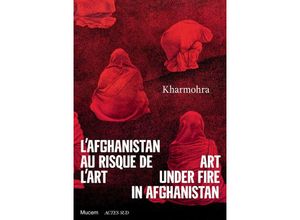For forty years life in Afghanistan has been shaped by wars the destruction of heritage
terrorist attacks everyday fears and hopes and migrations. In 2001 the Taliban government
was overthrown by an international coalition bringing hopes of stability and reconstruction.
The intervention did not however bring total peace. In this period of optimism a number of
international creation programs were set up as young Afghan artists returned from exile.
Artists in the country - either self-taught having grown up under a Taliban regime that banned
images or trained during their exile - had no heritage to take on and no classical rules to
break: anything seemed possible. Kharmohra is named after a gland taken from a donkey's neck
that on drying becomes as hard as stone and is said to bring happiness by making the owner's
most secret dreams come true. The metaphor is used to show how contemporary Afghan art is a
long way from the romantic expectations with which Westerners often approach the country. The
artists explore a wide variety of forms and media to express the horror of terrorism and the
omnipresent shadow of death looming over the hostile urban environment. The works stand as an
often humorous testimony to the peace that was promised but never delivered and the bitter
illusions this fostered. All express a spirit of revolt against the most oppressive traditional
forces that repress women and homosexuals as well as the Hazara ethnic group. Through their
artistic practices the artists show how salvation however slight is achievable.



